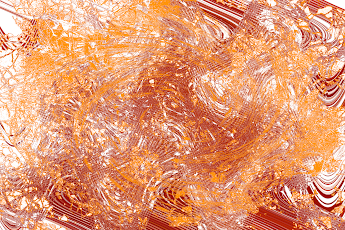Red Leaves Series, Photoshop, digital art, composition, cutout
- 5 minutes read - 915 words
Table of Contents
Change
I have used some algorithms and filters to transform an image showing leaves, into a series. In the northern hemisphere change is very visible when autumn arrives.
Green leaves turn yellow and red, and finally the leaves will fall down, turning the streets into a red-yellow mess. Finally, the leaves will be dissolved consumed by bacteria and other leave eaters.
This series tries to capture this process of change.
What is it that is causing the leaves to become red?
If the leaves of a tree become red, they may be able to remain on the tree for a longer period of time. As a result, depending on the soil’s quality, the results may differ from one another. Several studies have indicated that the leaves of trees growing in highland habitats, where the soils contain little nitrogen, are significantly redder than the leaves of trees growing in floodplain areas. Throughout the entire calendar year
Because they are trying to store up as much goodness as they possibly can, the leaves develop a magnificent shade of red throughout the season. before a tree begins to make preparations for the upcoming winter season.
If the soil quality is poor, a tree’s ability to recover nutrients from its leaves is reduced, and the leaves become redder as a result of the additional effort required.
Because of this deprivation of nutrients, the soil in the neighboring highland area has turned a beautiful crimson, as has the foliage of trees in a flood plain adjacent to an adjacent upland area. As a result, the soil of the floodplain is extremely fertile, and the autumn leaves have retained their vibrant yellow hue.
The color red is considered to be advantageous
When it comes to recycling nutrients, the more vibrantly colored a leaf is, the greater the amount of nutrients it will recycle.
Fall is a transitional season in which trees begin to degrade the green chlorophyll in their leaves and re-distribute the nutrients found in those leaves to the trunks and roots of the trees. They are able to function during the winter months when sunlight is scarce because of their adaptation.
When the chlorophyll in the leaves of some autumn trees is exhausted, the yellow color that can be seen is a result of the carotenoids, which have been there throughout the season but have been concealed by the leaves, which are responsible for the yellow color. On the other hand, the crimson hue is due to the presence of a pigment known as anthocyanin, which must be synthesized from scratch each year as the autumnal season approaches.
The trees are preparing for the future by pruning themselves
Trees were putting in a great deal of work as the season came to an end in preparation for the next winter months, and it wasn’t always obvious why. Removal of “green” (=chlorophyll) from leaves requires a significant amount of energy, hence there must be a significant reward to investing in this process. Because leaf pigments act as antioxidants, they help a tree to withstand the effects of severe environmental circumstances. Furthermore, they may attract birds, which may disseminate fruits, or they may raise the temperature of the leaves, which aids in keeping the tree protected from the cold in the winter.
Bright sun means bright leaves
It has been observed that when the weather is unusually sunny and cold in the autumn, the color of the leaves intensifies and the leaves become more vibrant. A protective sunscreen effect may be achieved by the pigment, allowing leaves to remain on trees for longer periods of time and, as a result, more nutrients to be extracted from them. When the chlorophyll in the leaves deteriorates, photosynthesis becomes more difficult, and the leaves become more sensitive to the impacts of the Sun’s rays as a result. It is more difficult for a tree to produce new leaves when its leaves are damaged, which results in the tree losing a vital supply of nourishment.
It all has to do with the nitrogen
Anthocyanins were produced in trees that were previously unable to make them due to mutations in their DNA (tree mutants), according to the research. They drop their leaves while still in the green stage of development when exposed to a high-stress environment defined by strong light and cold temperatures. Plants that had been genetically changed were significantly less efficient at storing up nitrogen for the winter than their non-modified counterparts.
It is more important for an undernourished tree to maintain its existing resources, and as a result, it will turn red in order to prevent its leaves from falling prematurely in the spring.


